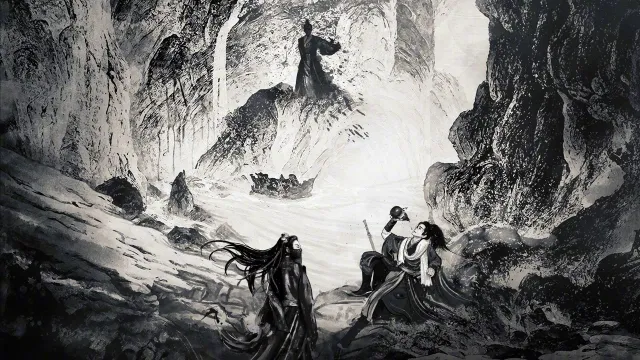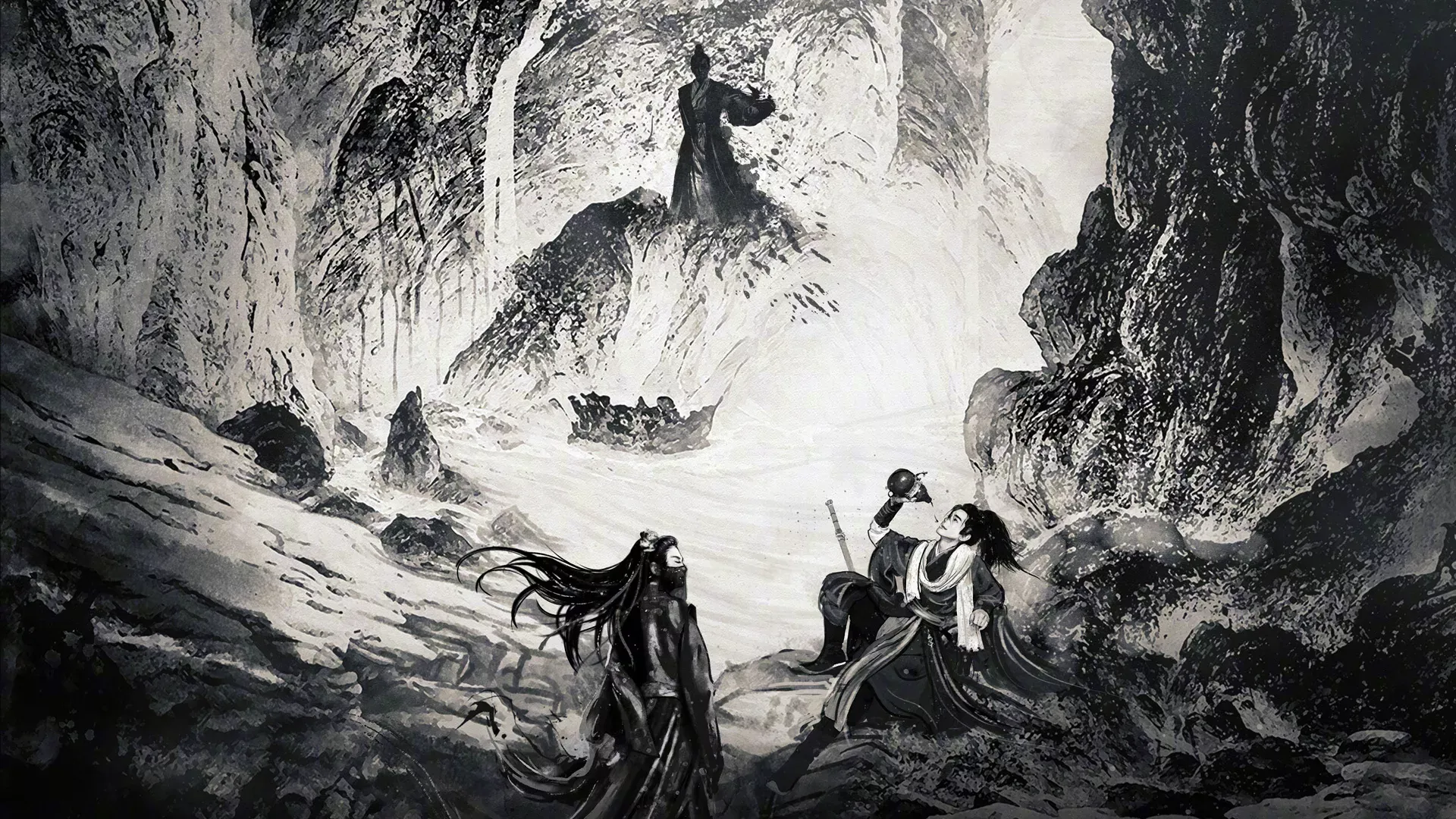The Ming Dynasty (明朝 – Míng Cháo) serves as the historical backdrop for multiple Jin Yong novels, providing the political context within which the martial arts world’s power struggles unfold. The dynasty appears in The Heavenly Sword and the Dragon Sabre, Laughing in the Wind, and Ode to Gallantry, spanning different periods of Ming rule and reflecting the dynasty’s evolution over time.
History
Foundation
The Ming Dynasty was established in 1368 by Zhu Yuanzhang (Emperor Hongwu) after overthrowing the Yuan Dynasty. The dynasty restored Han Chinese rule and implemented a centralized bureaucratic system that would influence governance for centuries.
Political landscape during the novels
The Ming Dynasty appears across multiple Jin Yong novels, reflecting different periods of its rule:
The Heavenly Sword and the Dragon Sabre (late 14th century): Set during the early Ming period, the novel explores the transition from Yuan to Ming rule and the establishment of Han Chinese governance. The Ming Order represents the emerging Ming dynasty’s influence on the martial arts world.
Laughing in the Wind (16th century): Set during the mid-Ming period, the novel deliberately avoids specific historical references to emphasize its universal political allegory. The Ming Dynasty’s presence is felt through the social and political structures that influence the jianghu.
Ode to Gallantry (late 16th century): Set during the late Ming period, the novel explores the dynasty’s decline and the corruption that would eventually contribute to its downfall. This political climate provides the perfect backdrop for Jin Yong’s exploration of power struggles and corruption within the martial arts world.
Decline and transformation
By the late 16th century, the Ming Dynasty was showing signs of the corruption and factionalism that would eventually contribute to its downfall. This political climate provided the perfect backdrop for Jin Yong’s exploration of power struggles and corruption within the martial arts world.
Organisation
Imperial government
The Ming Dynasty operated through a complex bureaucratic system with the emperor at its apex. The system included:
- Emperor: Absolute ruler with divine authority
- Grand Secretariat: Administrative body handling imperial decrees
- Six Ministries: Civil service departments (Personnel, Revenue, Rites, War, Justice, Works)
- Censorate: Oversight body monitoring official conduct
- Provincial Administration: Local government structures
Martial arts integration
While the imperial government officially maintained distance from the martial arts world, local officials often formed alliances with orthodox schools for mutual benefit. The Five Mountains Sword Alliance and other orthodox factions received protection and legitimacy from these relationships.
Cultural integration
The Ming Dynasty’s emphasis on Confucian values and traditional Chinese culture provided the ideological framework within which orthodox martial arts schools operated. This cultural context influenced the moral standards and social hierarchies of the jianghu.
Martial arts abilities
Official martial arts
The imperial military maintained its own martial traditions, separate from the civilian martial arts world. These included:
- Imperial Guard Techniques: Specialized combat methods for protecting the emperor
- Military Training: Standardized combat techniques for the imperial army
- Archery and Cavalry: Traditional military skills maintained by the state
Military training
The Ming Dynasty maintained a professional military with specialized training in:
- Infantry Combat: Close-quarters fighting techniques
- Archery: Traditional Chinese archery methods
- Cavalry Tactics: Mounted combat and reconnaissance
- Siege Warfare: Fortification and siege techniques
Philosophy
Confucian governance
The Ming Dynasty’s governance was based on Confucian principles, emphasizing:
- Moral Leadership: Rulers should lead by virtuous example
- Social Harmony: Maintaining order through proper relationships
- Cultural Superiority: Preserving traditional Chinese values
- Bureaucratic Merit: Advancement through examination and merit
Cultural superiority
The Ming Dynasty promoted a sense of cultural superiority that influenced the martial arts world:
- Orthodox Traditions: Emphasis on established, respectable practices
- Social Hierarchy: Clear distinctions between different social classes
- Moral Standards: Strict codes of conduct for officials and citizens
- Cultural Preservation: Protection of traditional arts and knowledge
Notable members
Historical figures
- Zhu Yuanzhang (朱元璋) – Founder of the Ming Dynasty
- Emperor Hongwu (洪武皇帝) – First Ming emperor, established dynasty
- Emperor Yongle (永乐皇帝) – Moved capital to Beijing, commissioned expeditions
- Emperor Jiajing (嘉靖皇帝) – Ruled during the 16th century setting
Imperial officials
- Grand Secretaries – Senior administrative officials
- Provincial Governors – Regional administrators
- Military Commanders – Officers of the imperial army
- Censors – Officials monitoring government conduct
Relationships
Alliances
- Orthodox Martial Arts Schools: The imperial government maintained cordial relations with orthodox schools like the Five Mountains Sword Alliance
- Local Officials: Provincial and county officials often formed alliances with martial arts schools for mutual protection
- Merchant Guilds: Commercial organisations that supported imperial stability
Rivalries
- Heterodox Factions: Groups like the Sun Moon Holy Order were viewed with suspicion by imperial authorities
- Secret Societies: Underground organisations that opposed imperial rule
- Bandit Groups: Criminal organisations that challenged local authority
Political connections
- Bureaucratic Networks: Complex web of official relationships and patronage
- Military Alliances: Strategic partnerships with local military commanders
- Cultural Institutions: Support for traditional arts and scholarship
Locations
Capital
- Beijing – Imperial capital and administrative center
- Forbidden City – Imperial palace complex
- Temple of Heaven – Religious and ceremonial center
Military bases
- Imperial Garrisons – Military installations throughout the empire
- Border Fortifications – Defensive structures along frontiers
- Naval Bases – Coastal defense installations
Cultural centers
- Confucian Academies – Educational institutions promoting traditional values
- Imperial Libraries – Collections of official records and literature
- Temple Complexes – Religious centers supporting imperial legitimacy
Behind the scenes
Historical background
The Ming Dynasty (1368-1644) was one of China’s most significant imperial dynasties, known for its cultural achievements, maritime expeditions, and centralized governance. The dynasty restored Han Chinese rule after the Mongol Yuan Dynasty and established a sophisticated bureaucratic system that influenced Chinese governance for centuries.
The Ming context across novels
The Ming Dynasty appears across multiple Jin Yong novels, reflecting different periods of its rule:
The Heavenly Sword and the Dragon Sabre explores the early Ming period and the transition from Yuan to Ming rule. The Ming Order represents the emerging dynasty’s influence on the martial arts world, while the novel examines themes of ethnic identity and political loyalty during this transitional period.
Laughing in the Wind is set during the mid-Ming period but deliberately avoids specific historical references to emphasize its universal political allegory. The novel’s themes of political intrigue, factional struggles, and the gap between appearance and reality mirror the complex political dynamics of the Ming court.
Ode to Gallantry explores the late Ming period and the dynasty’s decline. The novel examines the corruption and factionalism that would eventually contribute to the dynasty’s downfall, providing a backdrop for exploring themes of power, corruption, and individual freedom.
Cultural impact and legacy
The Ming Dynasty’s cultural achievements included:
- Literature: Development of vernacular fiction and drama
- Art: Advancements in painting, calligraphy, and decorative arts
- Architecture: Construction of the Forbidden City and other imperial projects
- Technology: Innovations in printing, navigation, and military technology
The dynasty’s influence on Chinese culture and governance continued long after its fall, shaping the development of Chinese society and political thought.
In Jin Yong’s works
The Ming Dynasty serves as a crucial historical backdrop across multiple novels, representing:
- Political Complexity: The sophisticated diplomatic relationships between multiple powers
- Cultural Themes: The contrast between Han Chinese culture and foreign influences
- Social Structure: The hierarchical society and bureaucratic systems that influenced the martial arts world
- Power Dynamics: The complex relationships between different power centers and the interaction between orthodox schools and imperial authority
The dynasty’s evolution across these novels reflects Jin Yong’s exploration of how political systems change over time and how these changes affect the martial arts world and individual characters.
External Links
- Ming Dynasty on Wikipedia
- Emperor Hongwu on Wikipedia
- Emperor Yongle on Wikipedia
- Forbidden City on Wikipedia
See also
- Unknown Novel factions
- Jin Yong factions

